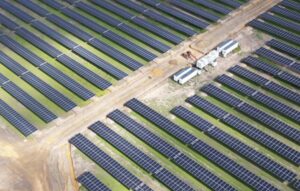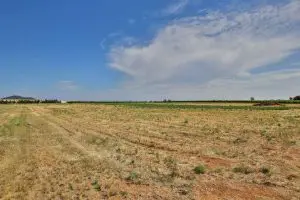Controversial home battery installation rules look set to be put in place in Australia, after a vote on the latest draft of safety guidelines – now five years in the making – reportedly won “consensus” support.
At least, we think that is what has happened.
In a short and detail-light statement published quietly on Wednesday, Standards Australia said the committee ballot on a new standard for on-site battery storage had “reached consensus,” and would proceed to publication.
The vote was not unanimous – hardly a surprise considering the push-back from major battery manufacturers and from the Smart Energy Council – but SA appears to suggest that the “small number” of negative votes will have no bearing on the adoption of the Standard.
“A process has commenced to consider the negative votes from a small number of Australian stakeholders,” the SA statement on Wednesday read, “however, it is anticipated this will not significantly delay publication.”
But how many voted against? Were the numbers equivalent to 20 per cent of the vote, enough to send the standard back for further review?
When asked by RenewEconomy, Standards Australia’s government relations manager Scott McGrath said, again, that the vote had reached consensus in accordance with SA’s rules, and that that any negative ballots were being reviewed by the technical committee.
Further digging has suggests this means there will be a meeting of the committee where they consider the merit of any technical points raised by those who voted ‘no’ during the ballot.
Whether these meetings will result in changes to some of the offending technical details of the Standard is not clear.
But McGrath has stressed that they will not alter the outcome of the ballot, nor the timely publication of the Standard.
“(It’s) certainly an exciting time to be in the battery storage sector,” he said.
Exciting indeed, if not downright confusing. And not just for the media.
The SEC on Wednesday afternoon put out its own bulletin claiming that the SA vote threshold had not been met, and suggesting that a further consultation process was being run to get a consensus Standard in place.
Twenty-four hours later, it issued another statement, saying “We were wrong!” But not in the way you might think.
“After securing what we understood were sufficient ‘No’ votes in the ballot, Standards Australia told us ‘No’ votes from New Zealand are not counted,” the statement says.
“But New Zealand officials on the committee vote – and are counted as part of the 42 votes! We are seeking clarification from Standards Australia.”
In the meantime, the SEC says it “might still be possible” to make small adjustments to the Standard, “so that costly and unnecessary fibre sheeting for pre-assembled battery storage systems may not be needed.”
The statement also takes issue with SA’s claim that the no-vote represented a small number of stakeholders.
“The Smart Energy Council advocated on behalf of Alpha ESS, LG Chem, Sonnen, Tesla and other battery storage companies in pushing for a NO vote, representing well over 70% of the battery storage market.
“To say we represent a small number of stakeholders is simply false.”
For those the committee members in the “small number” who voted in the negative – a number almost certain to include representatives of Tesla, Sonnen and LG Chem – the adoption of the Standard, as is, would be seen as a significant setback to residential battery storage growth in Australia.
Those companies have argued that the latest Draft Standard – while stopping short of previous versions that sought to relegate home battery systems to stand-alone fire proof bunkers – still has a “bunker mentality” in its approach to li-ion batteries and fire safety.
They say measures recommended to “fire-proof” batteries that are, according to the same Standard, rated “not applicable” on fire risk, will add unnecessary complexity and additional cost to residential installations – and this in an industry already battling barriers of high cost, and consumer reluctance to embrace new technology.
Uptake of batteries by Australian households has been sluggish, even in those states offering generous subsidies on solar storage, and even as rooftop solar installations continue to chart record growth.
One of the key concerns of battery manufacturers like Sonnen and Tesla, is that complicated fire-proofing guidelines will make it all but impossible to install batteries in many average Australian homes or garages.
They also argue that the Standard is out of step with international guidelines on battery storage, and will therefore put Australia behind the pack on the uptake of a technology considered vital to the distributed energy future.
On the other side of the equation, Standards Australia – with the backing of the Clean Energy Council – argues that the need for a national standard on safe battery installation is greater than any quibble over the fine print.
“It has taken five years and a lot of hard work by the members of the EL-042 committee to get the storage installation standard to a stage where it is ready for publication,” CEC CEO Kane Thornton said in a statement on Thursday.
“Ultimately this will help to deliver a safe and credible battery industry which will now be governed by a nationally-consistent set of rules.
“The introduction of a national standard will help to eliminate confusion for installers and ensure that they are on the same page with regulators across the country. It will also limit dodgy, high-risk batteries in the Australian market.
“The EL-042 committee is made up of a broad range of organisations, including governments, the renewable energy industry, safety authorities, CSIRO, emergency services, engineers, inspectors, networks, testing associations and consumer groups.
“We acknowledge that some aspects of the standard are not perfect, but the majority of committee members believe it has struck a balance between ensuring consumers are protected and the interests of battery manufacturers. This is an important milestone in building a home battery industry as we move towards a clean energy future.”
And in the a statement at the start of the ballot period, Standards Australia noted that it expects the standard to evolve as the industry evolves, and stressed that proposals for new standards – or changes to standards – can be submitted at any time.
Watch this space.
This article was originally published on RenewEconomy sister site, One Step Off The Grid









